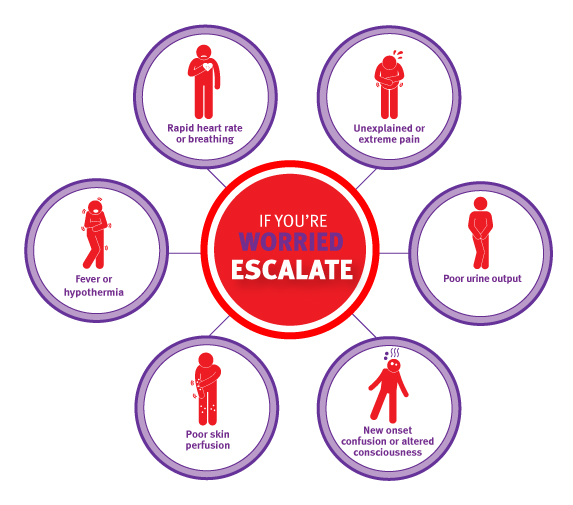Sepsis is a medical emergency that needs immediate treatment
Signs and symptoms of sepsis
There is no single sign or symptom of sepsis. Sepsis can initially look like the flu, gastro or a normal urinary, skin or chest infection. Symptoms can include:
- rapid heart rate or breathing
- feeling very unwell unexplained or extreme pain, or the “worst ever”
- fever or hypothermia
- poor urine output
- Weakness or aching muscles
- new onset confusion or altered consciousness
- skin rash or clammy/sweaty skin
Adult patients with sepsis also often report feeling ‘the sickest’ they have ever been or feeling ‘an impending sense of doom'.

If your patient presents to the emergency department with any of the above symptoms, we recommend screening them using the adult emergency department sepsis pathway. The pathway is a cognitive aid to help health professionals to rule out sepsis and does not commit the treating team to a diagnosis of sepsis or replace good clinical judgement.
Treatment
Once the decision to treat a patient for sepsis is made, the adult sepsis treatment bundle provided as part of the adult emergency department sepsis pathway is to be completed within 30 minutes for patients with meningococcal or neutropaenic sepsis, within 1 hour for patients with septic shock and 3 hours for patients with sepsis. It includes:
- Measure lactate
- Take x2 sets blood cultures
- Commence appropriate IV antibiotics
- Commence IV or intraosseous fluids if clinically indicated
To expedite the administration of appropriate antibiotics, the pathway is also available with optional sepsis antibiotic prescribing guidelines that reflect the antibiograms for different regions in Queensland.
In the event your patient has been screened for suspected sepsis and de-escalated from the pathway, or does have an infection, it is recommended they are provided with a copy of the adult sepsis discharge information sheet so they are aware of the signs and symptoms of sepsis should the infection not subside or their condition worsen.
Access the emergency department sepsis pathway